I am using this BS170 MOSFET to drive a fan using a pwm signal generated by a 3.3V MCU according to the following schematics:
(I know about the wrong symbol it's just for the packaging on the PCB)
So my gate gets connected to ground using the pulldown resistor and to the PWM signal.
I have two questions:
- Should i still use the D1 diode for back EMF protection or i can relay on the internal one in my transistor.
- Is my transistor is suitable for a fan using 0.32A. It should handle 0.5A so it should work right?
